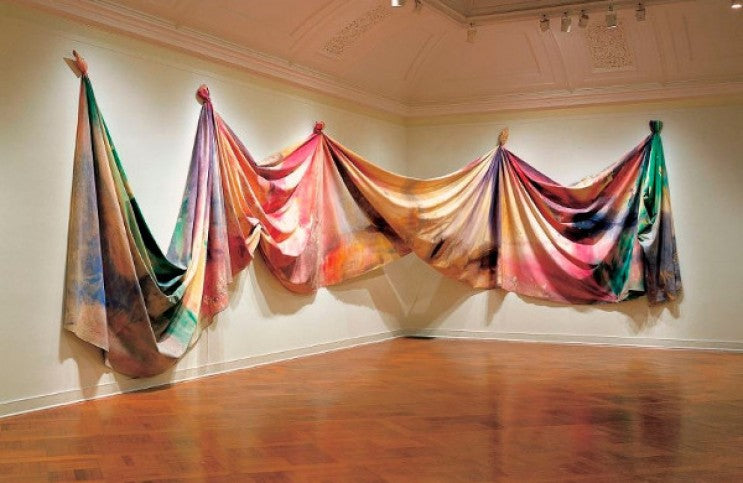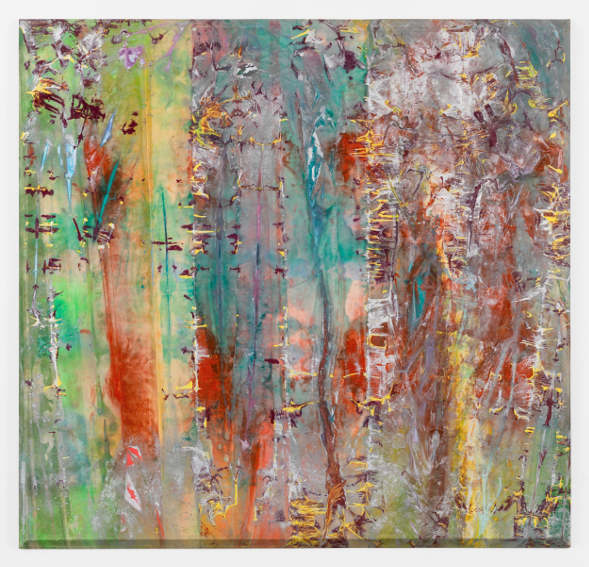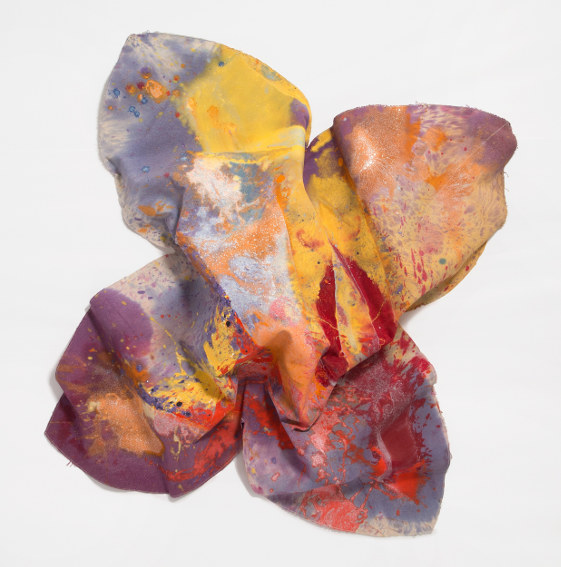
Sam Gilliam’s Music of Color in Basel
In conjunction with the start of Art Basel 2018, the Kunstmuseum Basel recently opened what is being called the first European solo exhibition ever of the work of American abstract artist Sam Gilliam. Titled The Music of Color: Sam Gilliam, 1967 – 1973, the exhibition features a total of 45 works curated from private and institutional collections from the United States and Europe. In the opinion of many artists working today, Gilliam is one of the most important American painters, not only because his work is beautiful, but because of the contribution it has made to contemporary art theory. His innovations shattered preconceptions at a pivotal moment, and directly challenged some of the loudest voices of his generation. So important were his ideas that it actually may sound hard to believe that Gilliam has never before had a solo exhibition in Europe. Yet, if you really examine his career, it may not come as such a surprise after all. Gilliam has always done things his own way. Even though his work helped establish the multi-faceted art market we know today, he has never performed to the expectations of that market. In a word, Gilliam is a rebel. Despite having represented the United States in the Venice Biennale twice—in 1972 and 2017—he only recently signed with a gallery, for the first time in his career. In the past, even when he was in the spotlight, he mostly sold his work himself, out of his studio. Nonetheless, his buyers included dozens of the most prestigious museums in the world, including the Tate Modern, the Guggenheim Museum in New York, the Metropolitan Museum of Art, MoMA, and the National Gallery of Art in Washington, DC, all of which hold his works. His willingness to never do what is expected could well be what stopped Gilliam from being the subject of a monographic European exhibition until now. But it is also what led to his biggest breakthroughs. His singular confidence in his own vision makes Gilliam the perfect representative of independence in the art world, and it is what has made him a living legend in the world of contemporary abstract art.
On the Bevelled Edge
Born in 1933, Gilliam entered his professional career at a time when trends were heading towards Minimalism, Geometric Abstraction, and Post Painterly Abstraction. Like many other painters of his generation, he started out painting exactly that kind of work. His hard-edge geometric abstract works from the early 1960s are reminiscent of the works of artists like Frank Stella, Max Bill, or Carmen Herrera. The year everything changed for Gilliam was 1967. That was when he adopted a completely different method of pouring acrylic paint directly onto unprimed canvas and then folding the canvas up while the paint was still wet. He would then allow the canvas to dry so that the crumpled lines would be forever incorporated into the material. Only then would he stretch the canvas onto stretcher bars.

Sam Gilliam - Whirlirama, 1970. Acryl auf Leinwand, 282.6 x 293.4 x 5.1 cm. Foto: Fredrik Nilsen, Courtesy of the artist, the Metropolitan Museum of Art, New York, and David Kordansky Gallery, Los Angeles. ©2018, ProLitteris, Zurich
The resultant lines from this method serve as remnants of the hand of the artist, and add structure and dimensionality to the art object. This innovation alone was groundbreaking. Yet Gilliam did not stop there. He next beveled the edges of his stretcher bars, which brought new attention to the sides of the painting, giving them equal importance along with the surface. The beveled edges made the paintings seem as though they were emerging outward from the wall, rather than simply hanging on it. This gave the paintings an almost sculptural presence. He called these works “Slice Paintings.” The word slice held multiple meanings. The stretcher bars were sliced into, creating the beveled effect. Also, the folds in the canvas acted as slices into the image, creating unpredictable color combinations and unexpected structural variations in the work reminiscent of riverbeds carved into the surface of the Earth.

Sam Gilliam - Rondo, 1971. Acryl auf Leinwand, Eichenbalken. 261 x 366 x 198 cm. Foto: Lee Thompson, Courtesy of the artist, Kunstmuseum Basel and David Kordansky Gallery, Los Angeles ©2018, ProLitteris, Zurich
Never the Same Twice
The next innovation for which Gilliam is known occurred in 1968, when he created his first “Drape Painting.” This body of work inhabits a theoretical space somewhere between painting, sculpture, and installation, because it eliminates stretcher bars, thus expanding the definition of what a painting can be. Gilliam painted his “Drape Paintings” using the same method he employed with his “Slice Paintings,” pouring acrylic paint directly onto unprimed canvas. But when the painting was finished, rather than crumpling and then stretching it, he simply draped the canvas directly on the wall, like a curtain or an item of clothing. His “Drape Paintings” took the idea of a shaped canvas to a new level, allowing the work to adopt a completely new configuration every time it gets presented. Gilliam has happily noted that his “Drape Paintings” are never shown the same way twice.

Sam Gilliam - Ruby Light, 1972, Acryl auf Leinwand, 203 x 144 x 30 cm. Foto: Cathy Carver, Courtesy of the artist and the Hirshhorn Museum and Sculpture Garden, Smithsonian Institution, Washington DC. ©2018, ProLitteris, Zurich
Since his major breakthroughs in the late 1960s, Gilliam has continued to experiment and evolve as an artist. He has expanded his range of surfaces, painting on paper and wood. He has also examined the limits of collage, finding ever more ways of blending materials, mediums and techniques. Despite the apparent differences in all of his various bodies of work, however, there is one aspect of everything Gilliam has done that defines his unique contribution to contemporary art, which has to do with how he helped us understand that painting and sculpture really are the same. People often say that an artist has blurred the boundaries between painting and sculpture, perhaps because their paintings have dimension to them, or because they hang from the ceiling or sit on the floor. Gilliam accomplished much more than that. He really does treat his surfaces the same way as a sculptor might treat metal, marble, or clay. He proves that the surface of a painting possesses the capacity to convey emotion, tell a story, or communicate formal subject matter. He defines the surface as more than a support—he makes it a medium in itself. The Music of Color: Sam Gilliam, 1967 – 1973 is on view through 30 September at The Kunstmuseum Basel.
Featured image: Sam Gilliam - Light Depth, 1969. Acryl auf Leinwand, 304.8 x 2269 cm. Corcoran Collection, Washington D.C. © 2018, ProLitteris, Zurich
By Phillip Barcio






